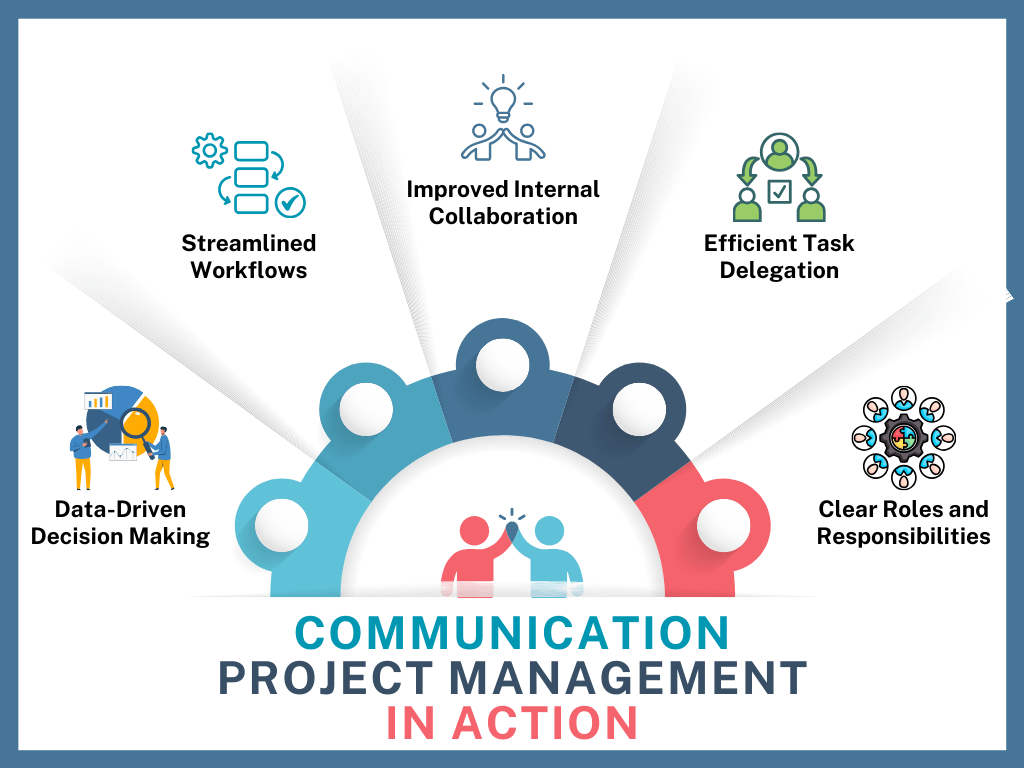We Help Build Sustainable Non-Profits
Our Services
Communication Strategy
Communication strategy leverages the power of storytelling, communication mediums, and analytics to create emotional connections, convey values, and inspire action.
The Power of Storytelling
Everyone loves a good story. Whether it’s binge-watching the latest Netflix series or getting lost in a page-turner, stories captivate us. Storytelling isn’t just for entertainment. It’s a secret weapon in the world of strategic communication.
In the past, marketing was very different from communications. Today, they’re deeply intertwined. That’s because corporations \realized that it wasn’t enough to only talk about what they were selling; they had to show people why they should buy it.
At its core, storytelling is about creating meaning behind what you’re doing. It’s taking facts, events, or ideas and weaving them into a narrative that resonates with people—that connects with them and shows them why they should care about your product or mission.
But there is a lot more to it than you might realize. That’s why we’re here!
Strategic Communication for Nonprofits
Communication strategy is the heartbeat of growth and sustainability, whether your organization is a nonprofit, a foundation, or a business. At its core, it’s about transforming your organization’s mission from a whisper to a powerful, resonant narrative that connects deeply with supporters. When done right, a strategic communication approach isn’t just about sharing information—it’s about creating effective, efficient, meaningful connections that inspire action.
The goal of storytelling is to create more than words. it’s to build:
Emotional Connections
Stories tap into emotions, and emotions drive decisions. When you tell a story, you’re not just sharing information – you’re creating a feeling. And let’s be honest, people remember how you made them feel long after they’ve forgotten what you said.
Memorability
What’s easier to remember: a list of bullet points or a captivating story? Exactly. Stories stick in our minds like gum on a shoe (but in a good way).
Simplifying Complex Ideas
If your product, mission or service is complicated, wrap it in a story, and suddenly it’s digestible. It’s like sneaking veggies into a kid’s meal—they get the good stuff without even realizing it.
Trust
Stories humanize your brand. They show that behind the logo and tagline, there are real people with real experiences. It’s like saying, “Hey, we’re not just another faceless corporation. We get you.”
Inspiration for Action
A well-told story can light a fire under people. It can motivate employees, sway stakeholders, or push customers to take that leap and buy your product, fund your program, or get involved.
How to Harness the Power of Storytelling
You don’t need to be the next Shakespeare to use storytelling effectively. Start small:
– Share customer success stories
– Narrate your company’s journey and mission
– Use analogies to explain complex concepts
– Encourage employees to share their experiences
Remember, authenticity is key. Your stories should be true, relevant, and aligned with your brand values. No one likes a tall tale (unless you’re in the fiction business, of course).
In the end, storytelling in strategic communication is about creating a narrative that people can connect with, remember, and act upon. It’s turning your message into a journey that your audience wants to be a part of. So, what’s your organization’s story?
Strategizing Your Messaging
A well-crafted communication strategy becomes a roadmap to expanding impact. It helps your organization move beyond daily survival mode, allowing you to thoughtfully engage donors, volunteers, organizations, and community partners with precision and purpose.
By understanding your audience’s motivations, tailoring your messaging, and selecting the most effective channels, you can amplify your voice and create more compelling storytelling that truly reflects your organization’s heart.
The magic happens when you transform communication from a task into a strategic tool. It’s about building trust, creating transparency, and nurturing relationships that go beyond transactional interactions. Your communication strategy becomes the bridge between your nonprofit’s current reality and its potential future—connecting passionate individuals who want to make a difference with the meaningful work you’re doing on the ground.
Effective communication is the heartbeat of every successful organization. It’s not just about sharing your message; it’s about crafting a narrative that resonates, engages, and inspires action. It’s storytelling—with purpose and intent.
Why Strategic Communication Matters
A robust communication strategy is more than a nice-to-have—it’s a necessity. It serves as the roadmap for growth, sustainability, and increased impact.
Here’s why it’s crucial:
Enhanced Donor Engagement
A strategic communication plan is like a secret weapon for enhancing donor engagement. It’s not just about sending out the occasional email or posting on social media—it’s about crafting a narrative that resonates deeply with your supporters and keeps them connected to your mission.
Imagine this: Your nonprofit provides opportunities for disadvantaged children, and you’ve identified that a segment of your donors is passionate about visual storytelling. Armed with this knowledge, you create a series of compelling video updates showcasing the direct impact of their donations. These aren’t just any videos—they’re thoughtful stories that tug at heartstrings, featuring the children whose lives have been transformed by your programs. You share these videos through personalized emails, ensuring they land in the right inboxes at the perfect time.
But it doesn’t stop there. Your plan includes a thoughtful follow-up strategy. Perhaps it’s a handwritten note from a child who has been impacted, or an invitation to a virtual studio tour where donors can see what their contributions have helped build.
This level of personalization and attention makes donors feel truly valued and connected to your cause.
Let’s say you’ve noticed that another group of donors responds well to data-driven updates. For them, your plan might include quarterly impact reports that break down exactly how their donations have been used, complete with infographics and success metrics. This transparency builds trust and encourages continued support.
A strategic approach also helps you time your outreach perfectly. Instead of bombarding donors with generic appeals, you create a calendar of touchpoints that aligns with their preferences and your organization’s needs.
Maybe it’s a special message on the anniversary of their first donation, or a preview of an upcoming project that aligns with their specific interests.
By implementing a comprehensive communication strategy, you’re not just asking for support—you’re inviting donors into your story, making them feel like essential characters in your ongoing narrative of change. This deeper connection transforms one-time givers into lifelong advocates, ensuring that your mission continues to thrive and grow.
A strategic approach helps you connect with donors more effectively, showcasing your impact and needs in compelling ways.
Improved Organizational Alignment
A strategic communications plan acts as a unifying force, aligning every member of your team towards a shared vision and common goals. It’s like giving everyone in your organization the same sheet music, ensuring that you’re all playing in harmony.
A well-crafted communications strategy can work wonders for organizational alignment.
For instance, imagine you are on an executive team for a foundation providing grants for community projects. Your foundation has just launched a new initiative to fund innovative urban gardening projects. Without a clear strategy, different departments might interpret and communicate this initiative in various ways, leading to confusion both internally and externally.
However, with a strategic communications plan in place, everyone from the grant reviewers to the outreach team understands the core message and goals. The plan would outline key talking points about the initiative’s focus on sustainability, community engagement, and local food security. It would also provide guidelines on how to discuss the selection criteria, application process, and expected outcomes.
This alignment means that when a program officer speaks at a community meeting, their message will align perfectly with the content on your website, the emails sent by your marketing team, and the presentations given by your executive director to potential partners. It ensures that whether a community organization is hearing about your grant opportunity from a staff member, reading about it in a press release, or seeing it on social media, they’re receiving consistent, clear information.
Moreover, this alignment extends beyond external communication. Internally, it helps different departments understand how their roles contribute to the bigger picture. The finance team knows how to frame budget discussions around the initiative’s goals, the impact assessment team understands what metrics to focus on, and the board of directors can confidently speak about the foundation’s direction and priorities.
By fostering this level of organizational alignment, your strategic communications plan doesn’t just improve your messaging—it enhances your overall effectiveness, ensuring that every team member is working in concert to bring your foundation’s mission to life.
A comprehensive communications strategy ensures everyone in your team is working toward common goals, understanding their roles in achieving the mission.
Increased Public Awareness
Communication strategy extends beyond the walls of your organization. Imagine now that you’re representing a corporation providing water and gas to a bustling city. You’ve got pipes running underground, keeping the lights on and the showers hot, but most folks don’t give it a second thought—until something goes wrong. That’s where a savvy communication strategy comes in, turning your invisible service into a story that resonates with every cup of coffee people brew, and every warm bath they enjoy.
A comprehensive communication plan isn’t just about tooting your own horn—it’s about painting a vivid picture of your impact on daily life. For our water and gas provider, this might mean creating a campaign that follows a drop of water from source to tap or showcasing the journey of natural gas from deep underground to the blue flame on a stovetop. It’s about making the invisible visible, and the mundane magical.
But it’s not all sunshine and rainbows. Let’s say there’s a water main break or a gas leak. A solid strategy ensures you’re not just reacting, but that you are proactively educating the public about the safety measures you have in place and your rapid response protocols. It’s about building trust before you need it, so when challenges arise, you’ve already got a receptive audience.
Here’s where it gets exciting: you can leverage your communication strategy to champion causes beyond your immediate service. Maybe you launch a water conservation campaign, complete with eye-catching infographics on social media and partnerships with local schools. Or perhaps you spearhead an initiative on renewable energy, positioning your company as a forward-thinking leader in sustainability.
The key is consistency and creativity. It’s about weaving your message into the fabric of community life—sponsoring local events, creating engaging content that educates as it entertains, and always, always tying it back to your core mission of keeping the city running smoothly.
By implementing a comprehensive communication strategy, you’re not just raising awareness—you’re building a narrative that positions your organization as an essential, caring part of the community fabric. It’s about transforming from a business or nonprofit into a trusted partner in the lives of your community’s, one strategically crafted message at a time.
Effective Resource Allocation
Most organizations have limited resources of money, people, and materials, so there is little room for error when it comes to allocating them. By defining clear objectives and channels, you can focus your limited resources on what truly works.
Take, for example, a large nonprofit dedicated to rescuing horses. You’ve got fields full of majestic creatures, a team of passionate volunteers, and a mission to save every equine in need. But here’s the rub: your resources are as limited as your heart is big. That’s where a savvy communication strategy gallops in to save the day.
A well-crafted communication plan isn’t just about pretty pictures of horses on Instagram (though those certainly help). It’s about making every dollar, every volunteer hour, and every bale of hay count. For our horse rescue, this might mean using data-driven insights to determine which messages resonate most with potential donors. Perhaps you discover that stories of individual horse transformations, complete with before-and-after photos, lead to a surge in donations. Armed with this knowledge, you can allocate more resources to creating and sharing these compelling narratives.
But it’s not just about external communication. Your strategy helps you streamline internal processes too. Maybe you implement a volunteer management system that matches skills with needs more efficiently. Suddenly, your expert farrier isn’t stuck mucking stalls, and your social media whiz isn’t struggling with feed calculations. By communicating roles and expectations clearly, you’re maximizing the impact of every volunteer hour.
And let’s talk about those fundraising campaigns. Instead of scattering your efforts across every platform imaginable, your communication strategy helps you focus on the channels that work best for your audience. If you find that email campaigns have the highest ROI, you can allocate more resources there, rather than sinking money into underperforming direct mail campaigns.
The beauty of a strategic approach is that it’s all measurable. You’re not just throwing oats to the wind and hoping for the best. You’re tracking engagement, donor retention, and volunteer satisfaction. This data becomes your north star, guiding resource allocation decisions and helping you adjust course when needed.
By implementing a comprehensive communication strategy, you’re not just talking about saving horses—you’re creating a lean, mean, equine-rescuing machine. It’s about transforming your nonprofit from a well-intentioned effort into a finely tuned operation where every resource is used to its fullest potential, ensuring more horses find their forever homes.
Streamlined Project Management
A savvy and holistic communication strategy acts as a powerful catalyst for streamlined project management, transforming the often-chaotic world of organizational operations into a well-oiled machine. This means turning the daily triage of tasks and firefighting into a more organized, efficient approach to achieving your mission.
At its core, a comprehensive communication strategy facilitates clearer delegation of tasks and more efficient project management. It’s like giving everyone in your organization a roadmap, ensuring that all team members are not just on the same page, but marching to the same beat.
Here’s how it works in practice:

Clear Roles and Responsibilities: The strategy outlines who’s responsible for what, eliminating confusion and reducing overlap. It’s about making sure your expert farrier isn’t stuck mucking stalls, metaphorically speaking.
Efficient Task Delegation: With a well-crafted plan, you can break down and delegate tasks more effectively, using the latest easy-to-use technology tools. This means you can finally get some sleep at night, knowing everything is accounted for.
Improved Internal Collaboration: Whether your staff is small or large, a clear communication strategy fosters a positive work environment and encourages participation at all levels. It’s about ensuring no ideas or tasks slip through the cracks.
Streamlined Workflows: By implementing management reporting systems, you can prioritize, create guides, and monitor work more effectively. This extends to staff and leadership decision-making conversations, oversight, and reporting practices.
Data-Driven Decision Making: A solid communications strategy includes establishing key performance indicators (KPIs) to measure effectiveness. This allows for continuous improvement and adjustment of tactics as needed.
A communications strategy can transform project management from a series of reactive decisions to a proactive, strategic approach. It’s about creating a system where every team member understands their role in the bigger picture. Tasks are allocated efficiently. Progress is measured consistently.
This streamlined approach not only makes day-to-day operations smoother but also frees up valuable time and resources to focus on what really matters.
Data-Driven Insights: Know Your Numbers
Segmentation
Segmentation allows you to be a matchmaker for your message and your audience. By evaluating who your audience is through demographics, psychographics, and behavior, you can create a love connection between your content and the people you’re trying to reach.
It’s all about speaking the right language to the right people.
Channel Effectiveness
Channel effectiveness is another goldmine of insights. It’s like figuring out which door your audience is most likely to walk through. Maybe your water conservation tips are making a splash on Instagram, while your quarterly reports are getting more traction via email. This knowledge helps you focus your efforts where they’ll have the biggest impact, saving you time and resources.
Content Performance
Content performance metrics are your applause meter. They tell you which of your messages are getting standing ovations and which are falling flat. Are people spending more time reading about your community projects or your corporate sustainability initiatives? This feedback loop helps you refine your storytelling, ensuring you’re always putting your best foot forward.
Donor Behavior
For those in the fundraising game, donor behavior analysis is like having a crystal ball. It helps you understand the ebb and flow of giving, allowing you to time your appeals just right. Maybe you discover that your horse rescue sees a surge in donations after sharing before-and-after photos, or that your foundation’s donors are more generous at the end of the fiscal year.
Volunteer Engagement Data
Volunteer engagement data is the pulse of your community involvement. It helps you understand what motivates people to give their time and how to keep them coming back. Perhaps you find that your gas company’s employees are more likely to volunteer for hands-on community projects than for administrative tasks.
Measuring Impact
Finally, impact measurement is your end result. It’s about quantifying your organization’s difference in the world, whether that’s the number of children served by your arts programs, the reduction in water usage thanks to your conservation efforts, or the increase in community green spaces funded by your grants.
By embracing these data-driven insights, organizations of all stripes can create communication strategies that don’t just reach people—they resonate. It’s about turning numbers into narratives, metrics into meaningful connections, and data points into difference-making decisions.
After all, in the world of strategic communication, knowledge isn’t just power—it’s the key to unlocking hearts, minds, and maybe even a few wallets along the way.

Communication Matters
Communication Strategy Saves Money
It’s all about storytelling—and reaching your supporters when, where, and how they want, and about unifying your message within and outside your walls.
You’ll work more effectively and efficiently with a solid internal and external communications strategy.
We’re here to help!
Call us Today!
(561)843-9003
Key Components of a Strategic Communication Plan
Audience Segmentation
Understanding who you’re talking to is crucial. This involves:
– Analyzing demographics, psychographics, and behavior of your supporters
– Creating targeted messaging for different audience segments
– Identifying preferred communication channels for each group
Storytelling
Create a compelling narrative that:
– Aligns with your mission and vision
– Resonates with your target audiences
– Clearly communicates your impact and need
Channel Strategy
Select the right mix of communication channels, which may include:
– Email marketing
– Social media platforms
– Direct mail
– Website content
– Press releases and media outreach
Implementation Timeline
Develop a realistic timeline for executing your strategy:
– Create a 30–90-day communication calendar
– Utilize project management tools for efficient execution
– Develop a long-term roadmap for scaling the strategy
Measurement and Evaluation
Regularly assess the effectiveness of your strategy:
– Establish Key Performance Indicators (KPIs) based on SMART goals
– Implement tracking and analysis tools
– Schedule periodic reviews for progress assessment and strategy adjustment
Creating an Impact
It’s all about strengthening your impact, growing your support base, and ultimately achieving your mission more effectively.
It’s not just about telling your story—it’s about shaping a narrative that moves people to action and drives meaningful change
How CIG Can Help You Create a Communications Strategy
We are here to empower your organization to not only tell your story, but to do it in a way that makes people want to listen.
A strategic communication plan is a fundamental tool for your organization’s growth and development. It transforms your mission from a simple message to a powerful narrative that connects deeply with supporters, inspiring meaningful action and engagement, and it takes your action plan beyond your current circles to reach a larger audience.
For Collective Impact Group, the approach to creating communication strategies is comprehensive and data-driven. We focus on developing individualized plans that help organizations move beyond daily operational challenges toward sustainable growth.
Our methodology involves:
Comprehensive Communication Strategy Development
– Defining clear organizational goals
– Identifying target audience segments
– Creating tailored messaging approaches
– Establishing measurable key performance indicators
– Developing implementation timelines
Key Focus Areas
Audience Understanding/Segmentation: Analyzing demographics, psychographics, and behavioral patterns to create precise communication targeting
Channel Optimization: Selecting the most effective communication platforms for each audience segment
Content Strategy: Developing messaging that resonates with different stakeholder groups
Measurement and Evaluation: Implementing robust tracking mechanisms to continuously refine communication approaches
By providing this level of customized strategic support, Collective Impact Group helps nonprofits, foundations, and businesses transform their communication from a reactive process to a proactive, mission-driven approach that drives meaningful change.
Our goal is simple: help organizations tell their stories more effectively, engage their supporters more deeply, and ultimately increase their impact in the communities they serve.
Amanda Larson brings over 20 years of experience in branding and communications strategy from corporations and nonprofits to Collective Impact Group. Her expertise goes beyond simple messaging—she is a creative storyteller who understands the importance of data-driven insights. She works with organizations to create customized comprehensive toolkits to get them from survival mode to sustainable impact.
With her unique blend of digital communication strategy, brand development, and nonprofit leadership, Amanda understands that communication is the heartbeat of organizational growth. She helps others to understand your unique story, and in doing so, helps you to define not just who you are, but how to effectively reach and engage your supporters.
Her approach isn’t just about telling your story—it’s about creating meaningful connections that inspire action. She analyzes demographics, psychographics, and behavioral patterns to create messaging that truly resonates. She’ll optimize your communication channels, whether it’s through social media, email, or direct outreach, ensuring you’re reaching the right people at the time, in the right way.
She’ll also assist you in streamlining internal communications, task and project management, and developing channels so that work can be delegated and progress tracked.
From developing comprehensive communications plans to creating content calendars and brand style guides, Amanda provides a complete toolkit that sets your organization up for sustainable growth.
With her strategic thinking, creativity, and ability to inspire teams, Amanda’s ultimate goal is to help you do what you do best—make a difference. By implementing her strategic communication approach, you’ll enhance donor engagement, increase public awareness, and ultimately provide more opportunities for the communities you serve. Let Amanda transform your communication from a challenge into your greatest strength.
Want a free brainstorming session to see how we can help you optimize your internal and external communications?
Call us today at (561)843-9003!

Create
Understand your story.

CONNECT
Understand your audience: who they are and how they interact.

IMPACT
Meet your audience where they are with what they need to hear, and make a difference!


